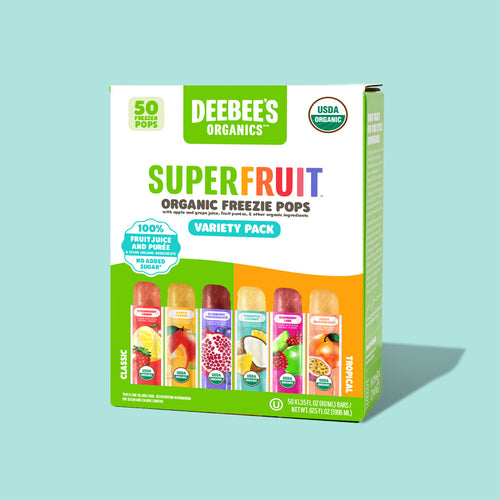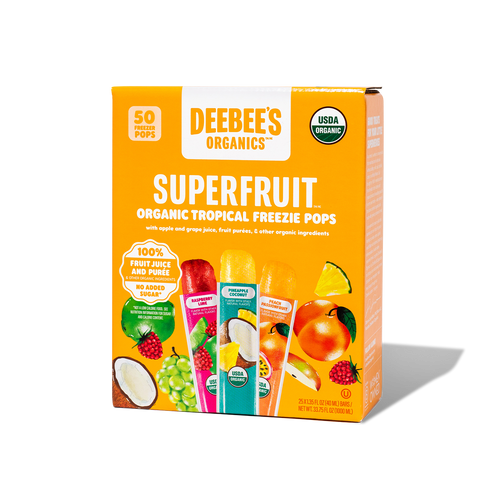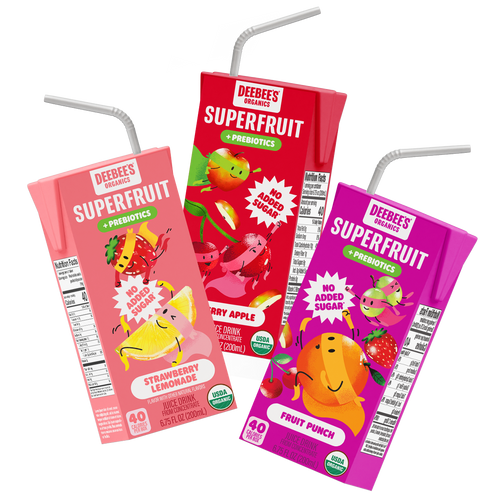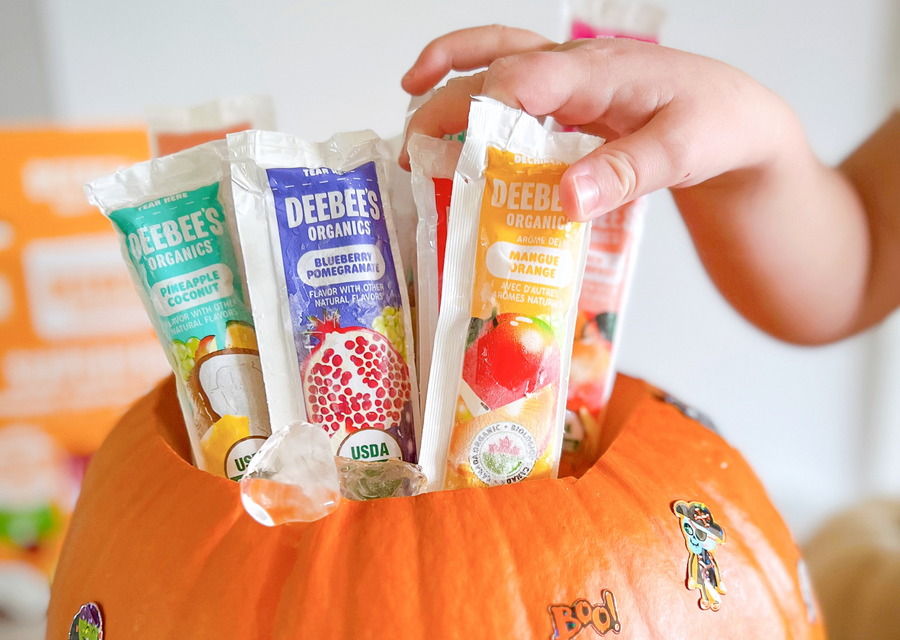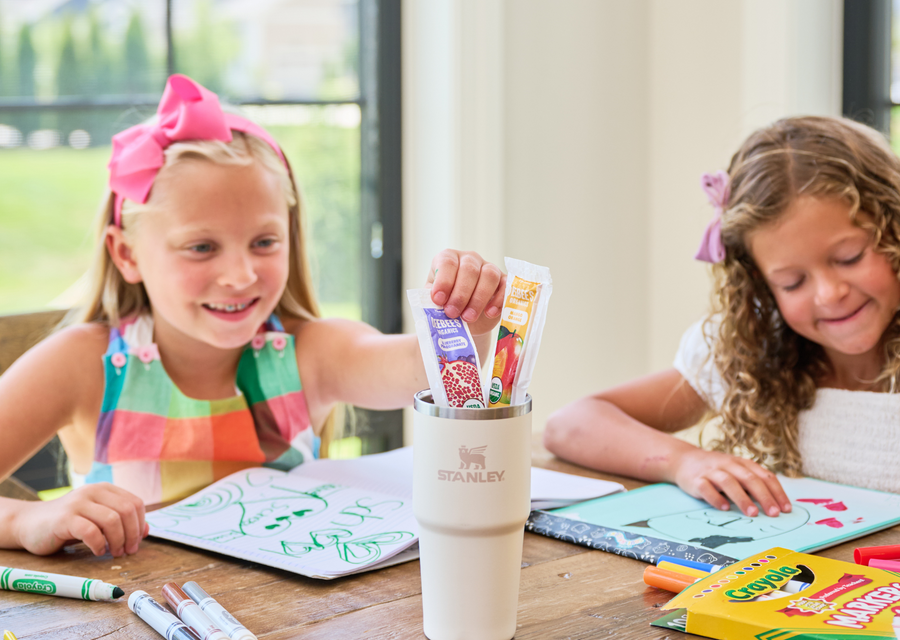Did you know that the practice of adding artificial color to brighten food began over a century ago?
What started as a surprising discovery of coal-tar based dye in the 1800s has since become an essential part of today’s food systems, with artificial dyes coloring thousands of foods around the world! Did you know that the majority of artificial food dyes are eaten by children? In fact, kids consume around 2,000 gallons of artificial dyes every day! These artificial dyes can also cause food intolerances and allergic reactions, making it hard for families to practice inclusive snacking when so many delicious treats on the shelf contain these dyes.
Keep reading to learn about why artificial dyes are so common in the food industry, how to color food naturally at home, and why we choose to never use artificial colors in any of our products!
What Are Artificial Food Dyes?
Artificial food dyes are petroleum or crude-oil based chemical substances that are made in a lab. Intended to brightly color foods and beverages, artificial colors contain no nutritional value. They are most often used in foods that are marketed towards children–boxed cereals, mac-and-cheese, candy, cereal, and even vitamins can contain these dyes! Though natural food dyes do exist (think beet and carrot extract), manufacturers prefer to use the artificial version because they create more vibrant colors at lower costs than natural dyes. Artificial dyes are also used in the food industry to compensate for color-loss that occurs when foods are stored on shelves for long periods of time!
In a world where brightly colored foods are exciting and adored by children, it’s easy to forget that the vast majority of these foods contain artificial dyes–an additive that not everyone can safely consume. This is what Dr. Dionne learned after watching her son unable to safely eat the artificially colored beverages and treats that his friends could. Suddenly, making sure that all children could enjoy the joy of a treat became a mission to Dr. Dionne–something she felt was so needed that she decided to make it happen herself.
Why We Don't Use Artificial Dyes
We believe that being a mom-owned company is our superpower because it allows us to understand the concerns that come with providing treats to children with food intolerances.
Did you know that all our treats are entirely free of all chemically synthesized food dyes and colorings? As a certified B-Corp that believes in creating treats that are both inclusive and delicious, choosing not to add artificial dyes in our products was essential in proving what we stand for.
You might have noticed that some of our products can sometimes be described as “brownish” in color–this is because our treats contain no chemical dyes or colorings, unlike many other popular treats and snacks you might see on the shelves. Fruit-based treats and snacks that are brownish in color are completely safe to eat and enjoy! An occasional brownish or discolored hue actually means that the real fruit purée, juice, or concentrate is made without artificial dyes or colorings of any sort. The next time you see a DeeBee's Organics treat that varies in color, rest assured knowing that this is not an indicator of freshness nor product quality-rather, it confirms the presence of the real and natural organic fruit we commit to using!
Did you know that it’s not just about omitting the artificial dyes to us? All our products are also mindfully sweetened with the wellbeing of everyone’s dietary needs and choices in mind. Entirely free of all refined sugars, sugar alternatives, and bursting with real organic fruit, we believe in treats you can both love and trust.
Color Food Naturally at Home!
If you’re like Dr. Dionne and are always searching for more natural ways to color foods without using artificial dyes, look no further than your own refrigerator! Many fruits and vegetables are naturally highly pigmented, which means they can be used to color foods so everyone can enjoy the delight of a brightly colored treat. Here are some easy ways to color foods naturally (and nutritiously!) at home:
- Blue: Did you know that mixing red cabbage with baking soda and using small amounts of the resulting pigment is a great way to turn simple drinks into a beautiful shade of blue?
- Pink: Try mixing strawberry or raspberry puree into frosting and icing to not only turn it into a delicate pink, but give desserts a fruity boost!
- Green: Organic matcha powder and spinach are both great ways to turn foods green for holidays like St. Patrick's Day! Opt for matcha powder in sweet treats, and spinach in savory foods.
- Yellow: Add a dash of saffron or turmeric powder in smoothies and soups to create a warm gold color that boosts your immune system too!
- Red: Did you know that beetroot is one of the strongest naturally-occurring colors? Try using boiled beet-water or dried beetroot powder to turn foods a gorgeous red.
- Orange: Try using carrot powder, carrot juice, and even paprika to produce a sunny orange color in drinks and soups (psst… this is a great hack to turn carrot cake into the brightest orange!)
